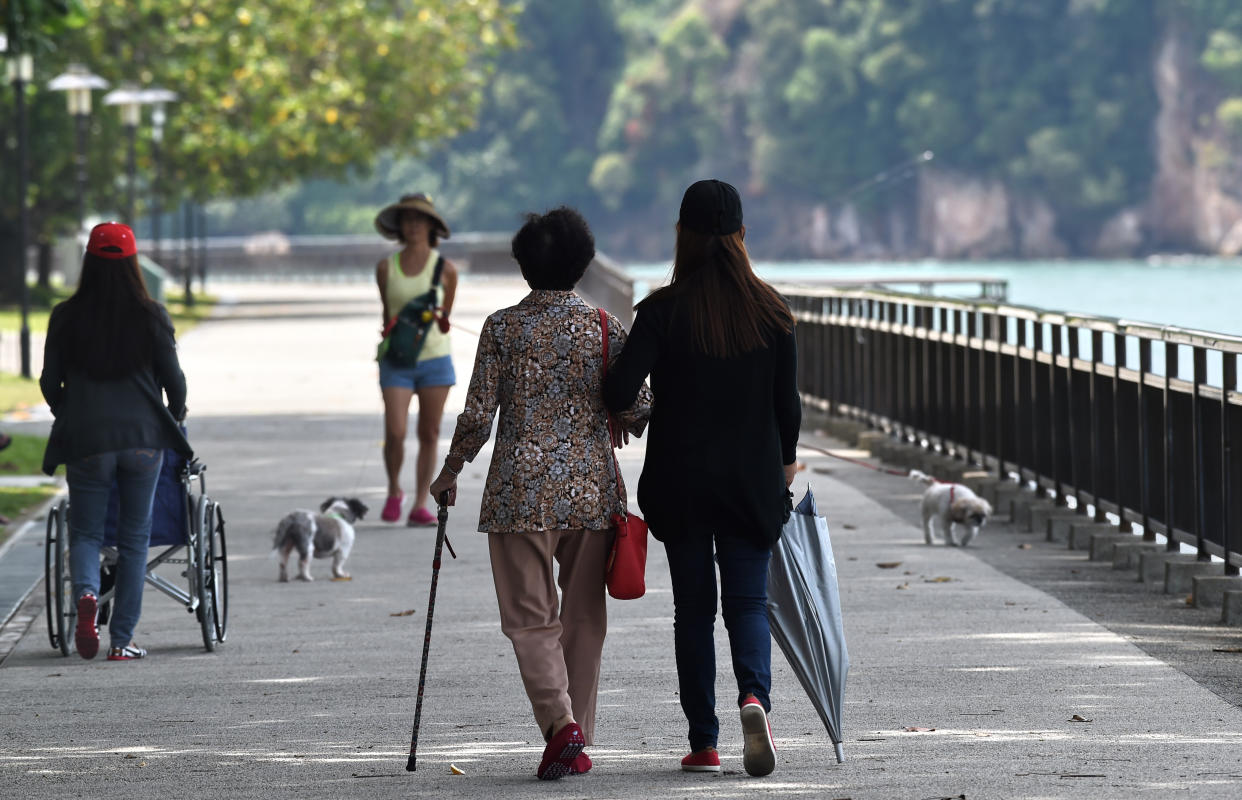Eldercare workers in Singapore paid the lowest among 5 Asia Pacific economies: study

Eldercare workers in Singapore are the lowest paid compared with their peers in four other major Asia Pacific economies despite the huge demand for their services amid the country’s rapidly greying population, according to a study by Lien Foundation released on Thursday (26 July).
These long-term care (LTC) workers – such as those who look after the elderly in nursing homes or daycare centres – are also paid significantly lower than those in other jobs with similar qualifications, such as a lorry driver or a sales assistant, the study by the philanthropic organisation showed.
Local nursing aides earn about $1,350 per month on average while foreign nursing aides in Singapore draw about $850 monthly, after tax adjustments, the study revealed. These salaries are significantly lower than what their counterparts earn in South Korea ($1,830), Japan ($3,000), Australia ($3,290) and Hong Kong ($3,750).
The salaries of LTC workers in South Korea, Hong Kong, Australia and Japan are not differentiated based on whether they are foreign or local, added the report.
In comparison, a lorry driver and a sales assistant in Singapore can earn higher than a local nursing aide – at an average of $1,730 and $1,547 per month, respectively.
With Singapore’s elderly population set to increase by 18 per cent from 2017 to 2020, low pay, limited prospects and high turnover in the sector may hinder the direct care workforce from growing by a “necessary” 45 per cent to 12,000 workers by 2020, the study said.
Citing March 2017 data from the Ministry of Health, the study estimated that about 8,300 LTC workers in Singapore are in direct care roles such as therapists, nurses and nursing aides.
The study on the LTC sector across the five economies, which focused on direct care workers, comprised research and findings from interviews conducted with around 35 care providers, as well as face-to-face surveys of around 250 LTC workers and 50 hospital workers.
The study also found that Singapore had the highest percentage of dependence on foreign LTC workers at 70 per cent, followed by Australia (32 per cent), Japan (10 per cent), Hong Kong and Korea (both five per cent).
Significantly, 42 per cent of foreign LTC workers in Singapore surveyed would consider leaving to work in another country, amid fierce competition for their services from economies like Japan and Hong Kong.
“We need a skills competency framework and progressive wage model system (for the sector),” said Radha Basu, the foundation’s director of research and advocacy. “I hope foreign workers are included in that as well.”
For instance, some of the levy imposed on foreign workers here could be channelled into funding for training and wage boosts, she added.
To tackle the pressing manpower needs in the sector, Low Mui Lang, executive director of The Salvation Army Peacehaven Nursing Home, suggested tapping new technology. For instance, homes in Singapore can implement a tracking system for elderly patients – as it is done in countries in Holland – to reduce the number of nurses required on night duty.
While the $800 million expenditure on the sector in Singapore for the 2016 financial year (FY) rose from $600 million in the previous year, it was still lagging when compared with the country’s economic output, according to the study.
It found that while Singapore had the highest gross domestic product (GDP) per capita at $71,000 in FY2016, the government’s spending on public LTC relative to GDP at 0.19 per cent was the lowest among the five economies. The comparative figures were higher at 0.29 per cent in Hong Kong, 0.92 per cent in Australia and two per cent in Japan.
“We do think there’s room (to spend more),” said Basu. “What we seeing is there is a gap between the real cost of care compared with the norm cost.”
She stressed the need for more “credible national-level data” on the sector in Singapore, and that there is not enough clarity about the cost of long-term care in Singapore currently. This is crucial so that Singaporeans can have informed discussions about the type of health care system they want and how much they would pay for it, said Basu.
“We have out of pocket data on health care, but not on long-term care…If we knew that, we will get a better sense of what the (magic) number (for government spending) should be,” she added.
Other Singapore stories:
NTUC chief Ng Chee Meng calls on more employers to raise workers’ retirement age
Little India slashing: Suspect brought by police to Lower Pierce Reservoir


